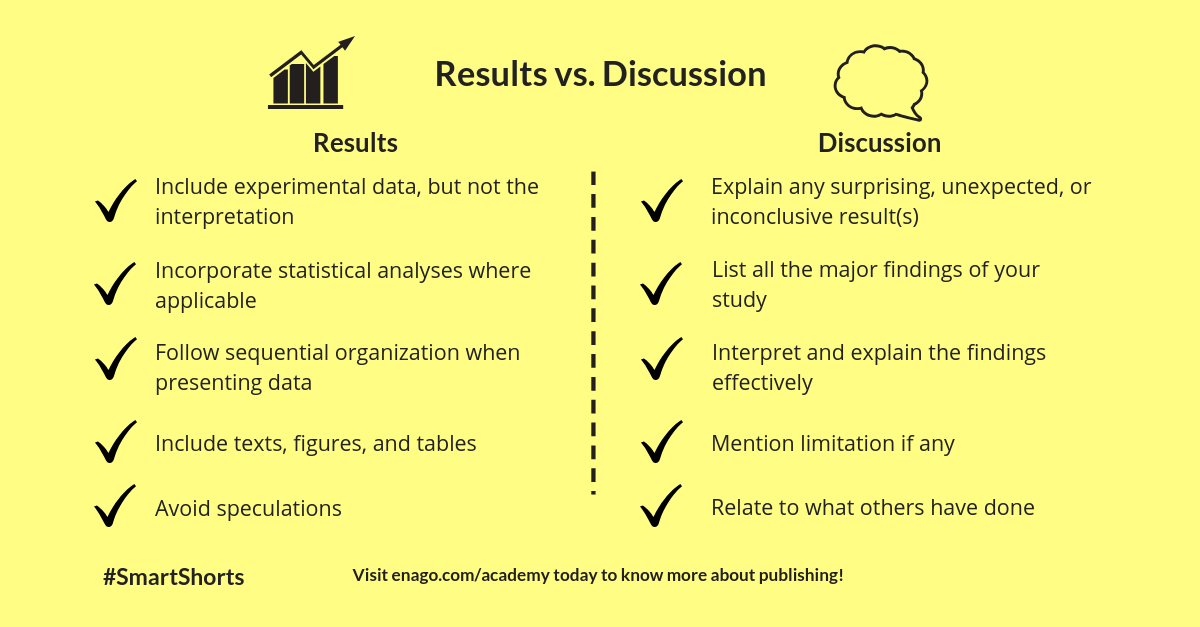How to Separate the Results and Discussion Sections of Your Manuscript

Scientific manuscripts are published to communicate your research work to the scientific community. A manuscript published in a reputed journal also serves as a validation of the work done by you. The body of an original research article is typically divided into the introduction, methodology, results, discussion, and conclusion. This division allows the authors to present their work in an organized manner. However, guidelines may differ across journals. Some journals may require the results and discussion as one combined section whereas others may require them as separate sections.
Both formats have their own advantages as well as disadvantages. The combined approach discusses results immediately after presenting them, thus saving readers the time they would have otherwise spent on switching between sections. In contrast, when the two sections are separated, there is continuity in the discussion and the reader can view and analyze the complete study in one go as opposed to reading results in between in a combined section. However, the reader would have to go back to the results section to correlate the discussion. Both the methods are acceptable, and there is no right or wrong. Here we discuss the effective separation of the two sections.
Tips to Effectively Separate the Results and Discussion
Keep in mind the following points when you want to separate the results and discussion in your manuscript:
- Stick to presenting your data in the results section.
- Explain your results in the discussion section.
- Information given in the results section should not be repeated in the discussion section.
Communicate Your Results Effectively
The results section is the focus of your research paper. This section represents the outcome of your work. A well-written result is essential to generate interest in your findings.
Your results should include:
- Key outcomes of your study
- Statistical analyses that represent the significance.
- A visual representation of your data using figures, tables, and graphs whenever possible.
Do not represent the same data twice. Choose between a table or a figure to represent your data. Avoid using both.
Write an Impactful Discussion Section
Only presenting the results is not sufficient. The author needs to explain the significance of the results. The discussion should narrate a story, include explanations for observed phenomena, with supporting studies to justify/validate the findings.
Keep in mind the following points while writing your discussion:
- Address the problem stated in your introduction
- Review your findings in the context of supporting literature and existing knowledge.
- Critically analyze your results.
- Include future research directions in your discussion.
- Avoid repeating information given in the introduction.
- Derive conclusions unless the journal requires it to be a discrete section.
We hope these tips help you effectively separate your results and discussion sections. Do you have any more tips to contribute to our list? Please add your ideas to our comments section below.










